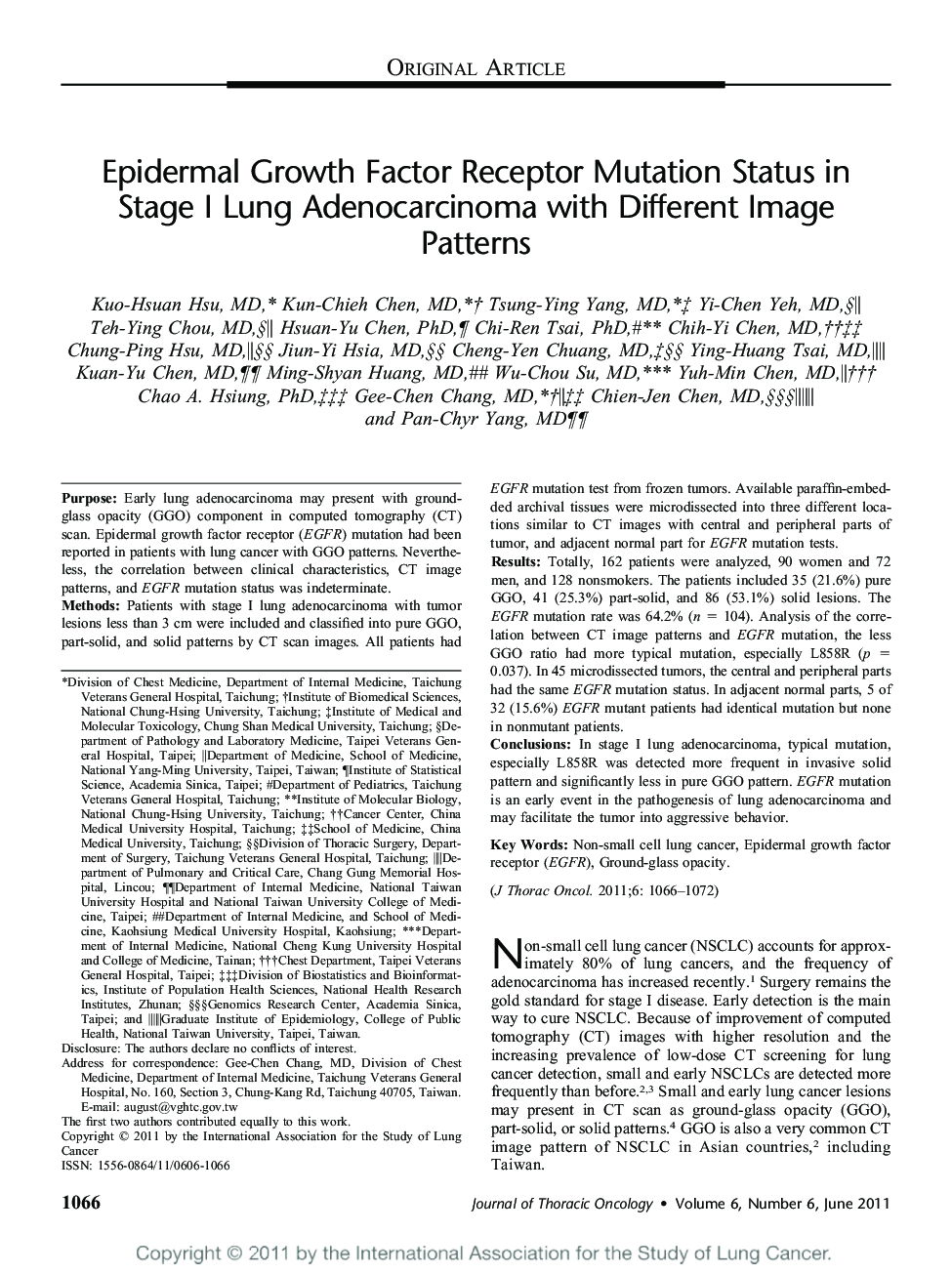| کد مقاله | کد نشریه | سال انتشار | مقاله انگلیسی | نسخه تمام متن |
|---|---|---|---|---|
| 3991115 | 1258759 | 2011 | 7 صفحه PDF | دانلود رایگان |

Purpose:Early lung adenocarcinoma may present with ground-glass opacity (GGO) component in computed tomography (CT) scan. Epidermal growth factor receptor (EGFR) mutation had been reported in patients with lung cancer with GGO patterns. Nevertheless, the correlation between clinical characteristics, CT image patterns, and EGFR mutation status was indeterminate.Methods:Patients with stage I lung adenocarcinoma with tumor lesions less than 3 cm were included and classified into pure GGO, part-solid, and solid patterns by CT scan images. All patients had EGFR mutation test from frozen tumors. Available paraffin-embedded archival tissues were microdissected into three different locations similar to CT images with central and peripheral parts of tumor, and adjacent normal part for EGFR mutation tests.Results:Totally, 162 patients were analyzed, 90 women and 72 men, and 128 nonsmokers. The patients included 35 (21.6%) pure GGO, 41 (25.3%) part-solid, and 86 (53.1%) solid lesions. The EGFR mutation rate was 64.2% (n = 104). Analysis of the correlation between CT image patterns and EGFR mutation, the less GGO ratio had more typical mutation, especially L858R (p = 0.037). In 45 microdissected tumors, the central and peripheral parts had the same EGFR mutation status. In adjacent normal parts, 5 of 32 (15.6%) EGFR mutant patients had identical mutation but none in nonmutant patients.Conclusions:In stage I lung adenocarcinoma, typical mutation, especially L858R was detected more frequent in invasive solid pattern and significantly less in pure GGO pattern. EGFR mutation is an early event in the pathogenesis of lung adenocarcinoma and may facilitate the tumor into aggressive behavior.
Journal: Journal of Thoracic Oncology - Volume 6, Issue 6, June 2011, Pages 1066–1072